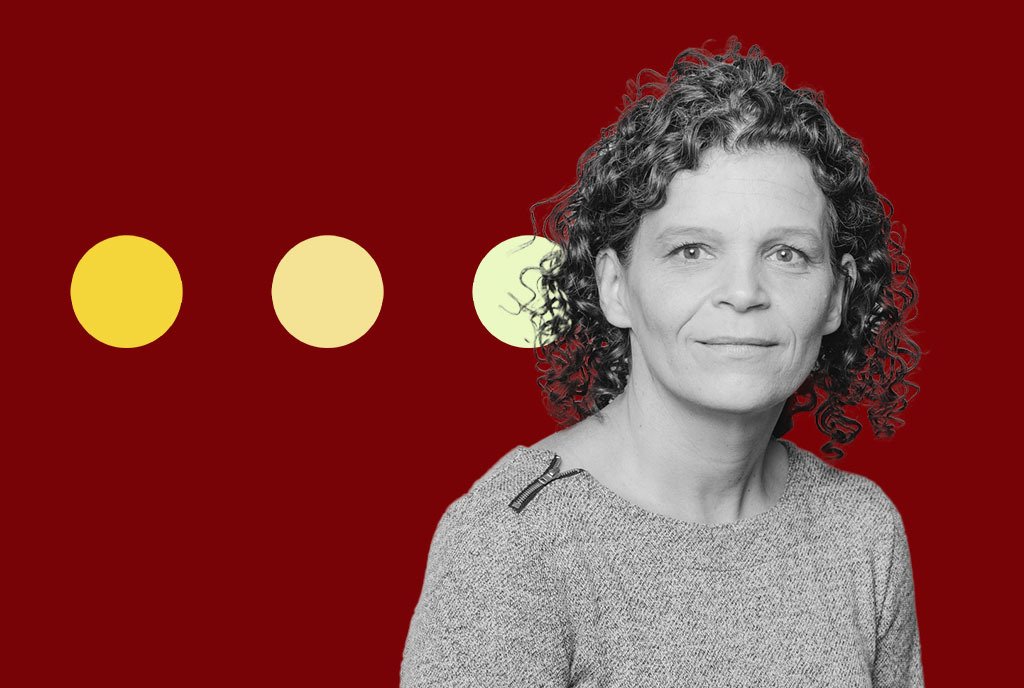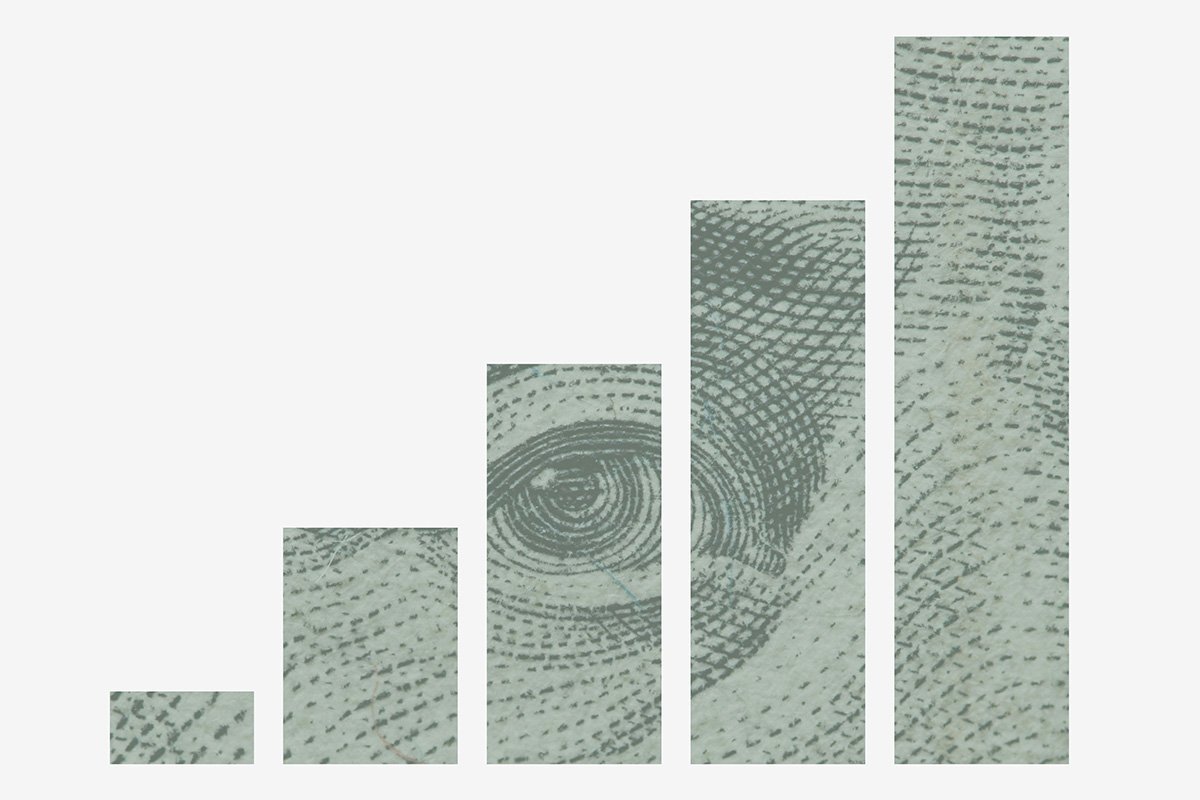
At NPQ, we have long tracked changes in the business model of journalism, including the rise of nonprofit journalism. Not only are we a part of that industry, but it is an industry that is changing rapidly—and the implications of those changes are significant for journalism, the social justice fields we cover, and the future of democracy. In this interview, Monika Bauerlein, who has worked at Mother Jones since 2000 and has been its CEO since 2015, shares her perspective.
Steve Dubb: I saw a recent article that said 74 percent of your revenue comes from readers, either subscriptions or donations. Could you break down your revenue profile—subscription, individual donors, philanthropy, advertising—and how that profile has changed over time?
Monika Bauerlein: Mother Jones is somewhat unique. We have been a nonprofit news organization for nearly 50 years. It really predated the growth of nonprofit news, which really only took off after the recession of 2009–2010.
There is no one revenue source that can keep journalism alive. Advertising isn’t going to. When Mother Jones was founded, the biggest sources of advertising were tobacco and cars. We came out early on with investigations of those two industries, so there went that [as possible funding sources]. So, we have long relied on our readership.
That said, there have been shifts. In 2015, when I assumed the publisher role at Mother Jones, advertising was about 13 percent of revenues. Now it is about 6 percent. That is partly because other revenue sources have grown.
Advertising is under tremendous pressure. That is one trend line. Magazine readership has stayed quite stable for us, while it has really collapsed for other publishers. It is a statement of how much readers care and are committed to keeping it alive, which is why we count subscriptions [along with donations] as reader support.
We have always had at Mother Jones a very large base of individual donors, which in many cases are magazine subscribers, but…it is because they support the journalism and [believe it] should it exist. We don’t have a paywall like most other publishers. That is because people in our community of support believe that journalism is not transactional. Because it makes an impact in the world.
Institutional [foundation] support has not been as significant as [it] has been for newer organizations. There has been growth in this area and there needs to continue to be growth. Funders are increasingly recognizing that it is not just about funding a specialized thing called journalism but that any institution that cares about democracy needs to focus on supporting journalism.
SD: Could you talk about how the advertising power and algorithms of Facebook and Google are changing the nature of journalism?
MB: Well, there is an art there. Initially, in the early 2010s and late 2000s, these digital platforms were an engine of expanding access to journalism. It was a lot easier for people to find the information they wanted to find. It had a positive effect initially. Mother Jones was the first general-interest publisher on the internet in 1993. It was long before I was here, but the folks at Mother Jones at the time saw the internet as a democratizing platform. But quickly, as Facebook and Google attracted tremendous amounts of global capital, their relationship with information became much more transactional.
When the audience still engages with the content, but they are not able to see it, that shows you the power of the corporations over the public square.This is particularly evident with Facebook. Facebook came to believe news could be an engine of growth for it. Mark Zuckerberg famously said in 2014 that Facebook is going to provide the “perfect personalized newspaper for every person in the world.” So, Facebook begins to show up at journalism conferences—handing out water bottles, and wining and dining executives.
But in 2016 or so, we see the reality that what Facebook and other platforms were designed to do was keep you on the platform as long as possible. So, the platforms would show you what made you angry, which a lot of times was extreme conservative contact. And bad actors could monetize it. Then, the platforms, having seen that this happened and seeing that making people angry does not work as well as they hoped, essentially did a complete 180 and turned away from news entirely.
In addition to that, they started looking at their algorithm to basically ensure they didn’t offend conservatives, so they would engineer ways to make low-quality content appear through algorithms rather than high-quality content. Today, many have chosen to follow journalism sites. Mother Jones has about 1.5 million followers on Facebook. But only a tiny percentage see our content, given the corporate priorities of how they now operate the platforms.
SD: Yes, I noticed in your presentation from 2019 that there was a tremendous drop in your Facebook traffic in 2017.
MB: It would be fine if the audience was saying that [they] don’t want this anymore, but when the audience still engages with the content, but they are not able to see it, that shows you the power of the corporations over the public square.
SD: In journalism, at NPQ, we have covered two main trends—one is the continued demise of what is often called legacy media (with constant layoffs at daily newspapers and news weeklies) and the other is the rise of nonprofit journalism that both of us are a part of. What do you see as the state of these two trends?
MB: Not good. I’m trying to come up with another term [for] legacy media—legacy is something you have when you die; we should think of some of these forms of media as resilient or survivor media.
[Nonprofit journalism] is the only future. I don’t see a future for high-quality journalism in a corporate for-profit setting.You can’t just distribute content through print, of course. Yet print and over-the-air radio remain important. Maybe let’s not be so dismissive of news organizations that have been around for a long time. But the corporate and advertising-supported model of media—that basically went out the window of the internet. It’s been slow agony.
There are models of how to do it defiantly [like community journalism], but it takes a long time, and the decline of the corporate model is so fast. Inevitably, a ton of communities will lose their news resources entirely.
Nonprofit newsrooms are growing rapidly, but they cannot grow as fast as the demise of the traditional sources. Journalism as essential infrastructure has not advanced as rapidly as it needs to [for us] to have the information that we need in a democracy. There has been growth in nonprofit and other revenue streams, but it needs to happen 10 times faster.
SD: Do you think it is possible for nonprofit journalism to become a dominant mode of journalism in the way that public radio news has kind of taken over a medium that used to be entirely commercially dominated?
MB: I think it is the only future. I don’t see a future for high-quality journalism in a corporate for-profit setting. In a limited fashion yes. The [New York] Times has made it work. For the vast majority of high-quality journalism, it is not going to be paid for in a for-profit commercial setting.
The big question is whether this means we will [have] a small amount of journalism with very little [news] in many communities or a significant amount. Of course, more is involved than replacing journalism that people used to get from the corporate news ecosystem, which often did not serve people at all.
If public service is the primary way journalism happens, the questions are how much of it are we going to have and how quickly is it going to grow. Is it going to grow in a fashion that it would sustain itself (which is the idea behind our recent merger with the Center for Investigative Reporting) or a lot of organizations that have a difficult time making ends meet?
SD: Darryl Holliday, who helped launch the Documenters program at City Bureau, once noted on an NPQ webinar that much of what has been called journalism was in no need of being saved. What he thought might “save journalism” was changing who is a journalist and what journalism covers. Do you agree? And, if so, how do you think the “who” and “how” of journalism needs to change?
Sign up for our free newsletters
Subscribe to NPQ's newsletters to have our top stories delivered directly to your inbox.
By signing up, you agree to our privacy policy and terms of use, and to receive messages from NPQ and our partners.
MB: The real promise of nonprofit and de facto nonprofit journalism, where your primary source of revenue is not corporate advertisers and not a single billionaire or a single institutional funder, [is] how you are accountable are the people who you serve. If you are not covering the things that the people who care about you want you to cover, you are toast and if you are not reflecting the people who support you, you are toast.
That’s different for different news organizations. It will differ if it’s Capital B, The 19th, City Bureau, or a small startup in Kentucky. Any of these organizations have to be reflective of the communities they support, or they lose the connection that is their only route to survival.
SD: How do you think about community accountability in journalism? We know that just because you’re a nonprofit, it is not automatic. What do you see as the most effective ways to build community through journalism?
MB: I don’t think there is one best way. Obviously, for news organizations, there is accountability from actually meeting the people that you serve in the real world. That doesn’t just happen automatically. You have to engineer it. There is wonderful work on community listening. We did a project last year where we conducted a series of focus groups of Black readers. That was not a geographic community, but it was a community of interest. Social change movements—we wanted to know more about how we serve them. Those are things that you can do that are defined projects. Newsrooms have to build into their day-to-day practice of being attentive to audiences as their business. Any time I write a column, I ask for feedback. We even asked our readers how we should do our fundraising.
We have to test and experiment. Not decide on a whiteboard. Accountability is what works for the people we are accountable to, so they have some agency for determining how we hear from them.
SD: What do you see as the role of philanthropy and public policy in supporting journalism? I know that in some countries like Australia and Canada, taxes are being used to support journalism. What are the best mechanisms?
MB: All of them—it takes every possible ethical way. The only bar is anything that is unethical and interferes with journalism. There are models for public support where [the] government has a role but is not [in] a position to censor. That happens in a lot of countries in Europe.
I’m not a fan of Australia and Canada. Taxing social media solves a problem from many years ago. Even if you tax the journalism on Facebook, today most journalism doesn’t show up on Facebook. There is a reason why Rupert Murdock was an advocate in Australia.
There are lots of other models. There is a package of legislation that has been proposed by Rebuilding Local News that has a lot of interesting elements in it. It takes audiences, flexible institutional (national foundation) support, public support, business support, and philanthropy in local communities. Businesses can decide that it is healthy to support local journalism even if it holds them accountable). And there may be methods yet to be devised.
You can have tax breaks for advertising with local news organizations, tax breaks for subscriptions. There are lots of different pieces. The CPB [Corporation for Public Broadcasting] is a great example of support for journalism. The fact that [it] is constantly under thereat should not persuade us that [it] is therefore a bad idea.
SD: Local commercial papers face pressures from advertisers and owners that can skew coverage or result in noncoverage—of course, part of the origin story of Mother Jones was about escaping that. But nonprofit journalism can also face pressures due to reliance on foundations or large donors. What do you see as the most effective ways to manage this tension?
MB: There is a scene with Lauren Bacall in To Have and Have Not. She pulls out a small wad of cash, and Humphrey Bogart is surprised that she has any money. Bacall replies: “Just enough to be able to say no if I feel like it.”
You have to be in a position to say no when you need to. It can be revenue from a funder or revenue from an advertiser. You have to be rock solid about being able to say no.
Transparency helps with this. If something is going to look bad and you know people are going to find out about it, it is a disincentive to do that thing. Part of saying no is having a diversity of revenue. If you depend on a single funder for 90 percent of your revenue, you can still say no, but it will then be no and goodbye.
When you have 15,000 stories about the price of milk and not a single story about…the system…then you’re doing [economic justice reporting] wrong.
SD: What does journalism that supports economic justice look like?
MB: You can see a lot of examples. Mother Jones is named after a labor leader who led child workers on a march to Washington. If we do not do effective journalism that supports economic justice, she would literally smite us.
Our latest issue was about oligarchy. A while back, we did a packet of graphics on economic injustice that got projected on the side of buildings.
We know what the topics are. But it is not enough. You have to cover it in a way that is accessible—not behind a paywall—and that people can relate to. You have to be reflective of the people that you serve and cover. You have to be open to feedback. That feedback has to make a difference. You have to change what you do based on what you hear.
I think something that is incentivized by the legacy corporate advertising-driven model of media is covering the economy. But when you have 15,000 stories about the price of milk and not a single story about [the] widening gap between the people who buy the milk and the people who control the system that sells the milk, then you’re doing it wrong.
But that’s the incentive structure we have. To feed the beast, what you were able to do is stand up in front of the grocery store and not spend the time to make the economic inequality story accessible and digestible. That’s part of the answer too.
SD: I know I didn’t ask specifically about the merger. Would like to talk about that or add anything else?
MB: The merger is really intended to do what needs to happen at this time. There is not one organization that is not really struggling. We have to change. There is no option that is just keep doing what we’re doing.
Putting these two organizations together is a big risk. Like everything else in journalism. We are doing it because we think we can be more impactful or effective in bringing more investigative journalism to more people.
We hope people will rally to support it….The model we all need to bet on is that people will recognize that journalism is something they need in the world and that it is worth supporting.










